@ElonMusk is reportedly planning to transition @Twitter (@X) away from @Amazon Web Services (@AWS) a
@ElonMusk is reportedly planning to transition @Twitter (@X) away from @Amazon Web Services (@AWS) and instead set up its own cloud services hardware. This move is likely due to Musk's desire to reduce costs, improve performance, and have more control over Twitter's infrastructure. AWS is the world's leading cloud computing platform, but it can be expensive, making it difficult for Twitter to save money on its operating costs. Musk has expressed concerns about #AWS's performance and believes #Twitter could improve its performance by setting up its own #cloudservices hardware.
#Musk may also want more control over #Twitter's #infrastructure, as setting up its own #cloud #services #hardware would allow Twitter to avoid relying on third-party providers like AWS, giving him more flexibility and control over how Twitter's infrastructure is managed and used. While Musk has not confirmed whether he plans to transition Twitter away from AWS, his track record of disrupting industries and his desire to improve Twitter make it possible.
Musk has discussed setting up his #datacenters to host Twitter's #infrastructure and developing his #cloudcomputing platform to power Twitter's operations. It is unclear how long Musk would take to transition Twitter away from AWS, but it is likely to be a complex and time-consuming process.
There are similarities between #ElonMusk's plans for #Twitter's cloud #infrastructure and the way @Apple transitioned to doing their #CPUs. Both companies are moving away from relying on #thirdparty #providers and developing their #hardware and #services. However, there are also important differences between the two cases. #Apple's transition to their #CPUs was a gradual process, while Musk's transition is likely to be more rapid.
Elon Musk's potential #transition from @AWS to @Twitter could lead to several benefits, including #reduced #costs, improved #performance, increased #flexibility, increased competition in the cloud computing market, and reduced reliance on Amazon. However, there are also potential risks associated with this move, such as increased complexity and risk, disruption to Twitter's services, loss of features and functionality, and increased costs in the long run.
In the same way that @SpaceX and #Starlink have set up #broadband #Internetinfrastructure in #lowEarthorbit (LEO), Elon Musk may eventually set up #datacenters in LEO. These data centers would offer reduced latency, increased bandwidth, and reduced costs. They would be closer to Earth than traditional data centers, which could be beneficial for applications requiring real-time data processing, such as online gaming and financial trading. Additionally, LEO data centers could have much more bandwidth than traditional data centers, making them ideal for high-speed data transfer applications like video streaming and cloud computing.
However, some challenges would need to be addressed before data centers in LEO can become reality. Power supply is a significant challenge, as data centers require a lot of power to operate. Cooling is also challenging due to the heat produced by data centers, and they would be exposed to radiation from the sun and space, which could damage electronic components and cause data loss.
Despite these challenges, Elon Musk may eventually set up data centers in LEO. He has a track record of overcoming challenges and achieving ambitious goals, and the technology to build and operate data centers in LEO is maturing. It is only a matter of time before the costs and risks of setting up data centers in LEO become acceptable.
If successful, Elon Musk's transition from AWS to LEO could have a major impact on the cloud computing industry. Data centers in LEO would offer significant advantages over traditional data centers, such as reduced latency, increased bandwidth, and reduced costs, potentially leading to a shift in the way cloud computing services are delivered.
-
 6:02
6:02
MAGA Lion HAT
1 year agoElon Musk Wants Twitter Payments System to Accommodate Crypto! 🤑
21 -
 12:32
12:32
Louis Rossmann
2 years ago $0.01 earnedElon Musk buying twitter
1422 -
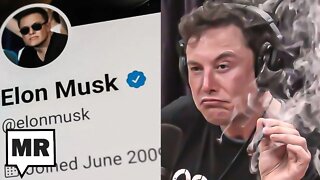 14:30
14:30
majorityreport
1 year agoElon Musk Has Another Chance To Buy Twitter
71 -
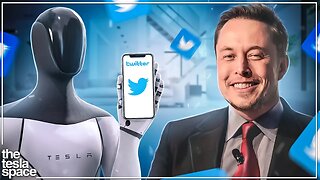 14:42
14:42
The Tesla Space
2 years agoThe Real Reason Elon Musk Is Buying Twitter!
7 -
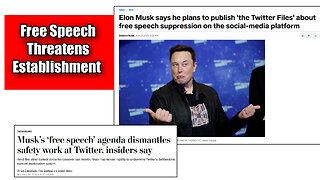 12:13
12:13
BuzWeaver Channel
1 year agoWhy Elon Musk Buying Twitter Is Significant To EVERYONE
101 -
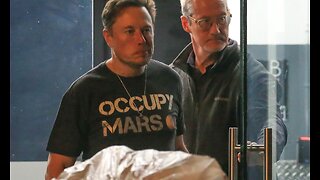 6:44
6:44
Best Product Reviews
10 months agoElon Musk puts a reading paywall on Twitter - The Verge
21 -
 12:07
12:07
Heresy Financial
2 years agoElon Musk buys 9.2% of Twitter, Huge Win for Capitalism
931 -
 0:51
0:51
chycho
1 year agoElon Musk Should Fire 95% of Twitter Employees
191 -
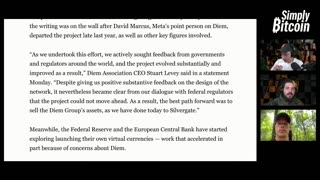 1:05:50
1:05:50
ElisBeyondNormal
10 months agoWhy Elon Musk Needs Bitcoin for X.com (New Twitter) | EP 787
66 -
 7:23
7:23
BuzWeaver Channel
1 year agoElon Musk Completes Deal To Purchase Twitter
11